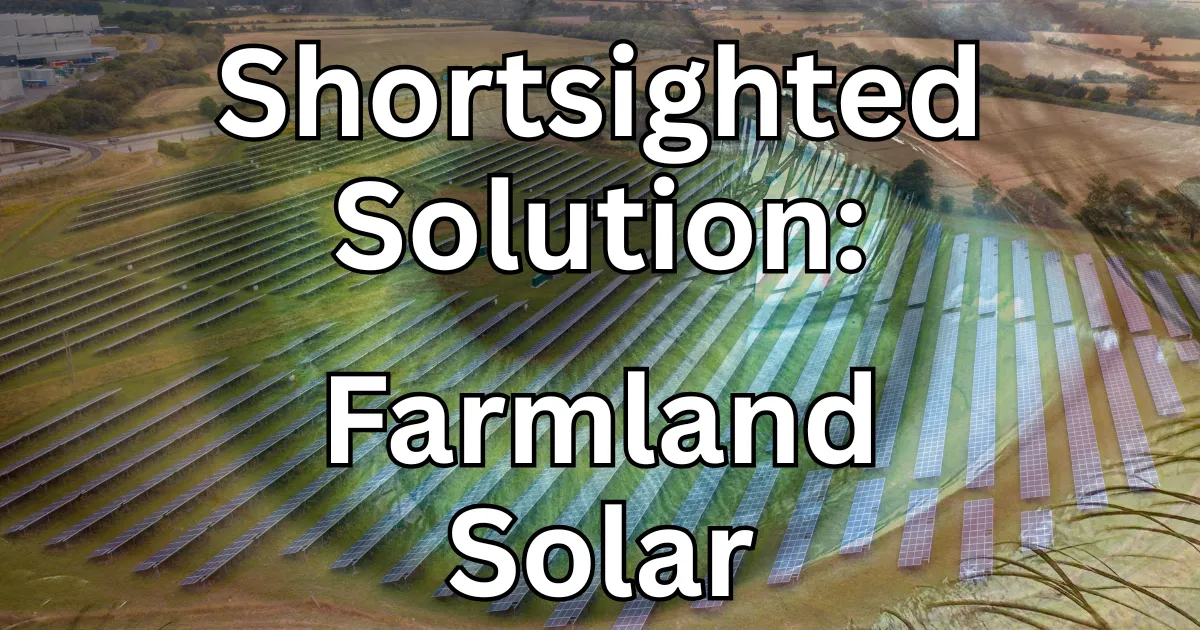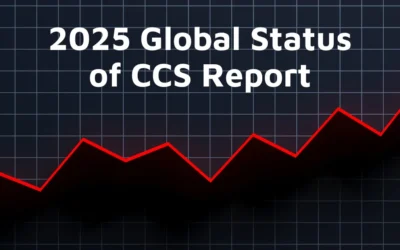Beau Parmenter
In the pursuit of corporate sustainability and ambitious net-zero commitments, the most critical decisions often revolve around our most finite resource: land. Every executive and sustainability leader faces a choice. Do we pursue solutions that offer a single benefit at the expense of the ecosystem, or do we invest in holistic systems that generate multiple, compounding returns for the planet, for communities, and for the bottom line?
This is the central question in the growing debate between two prominent land-based climate solutions: large-scale solar development on agricultural land and regenerative carbon removal. At Dynamic Carbon Credits, we believe the choice is clear. The future of effective, credible climate action lies not in paving over our farmland with panels, but in cultivating it to become the world’s most powerful carbon sink.
Our Solution: Regenerating Land Through Direct Air Capture via Plants (DAC-P)
Our mission is built on a powerful, natural technology: photosynthesis. Through what we call Direct Air Capture via Plants (DAC-P), we leverage specialized crops to pull vast amounts of CO2 from the atmosphere. But our process goes far beyond simply planting.
The plants we cultivate are chosen for their deep, powerful root systems. As they grow, they act as natural regenerators, aerating compacted earth, improving soil structure, and drawing legacy toxins like heavy metals out of the ground and into their stalks. This biomass is then harvested and converted into biochar, a highly stable form of pure carbon.
When this biochar is returned to the earth, it creates a cascade of benefits:
- Permanence: Each ton of biochar locks away carbon for centuries, providing a durable, long-term sequestration solution that stands up to scrutiny.
- Additionality: Our model provides farmers with the financial incentive and operational support to adopt these regenerative practices. This creates a verifiable climate benefit that would not have occurred otherwise—the very definition of additionality that is crucial for high-integrity carbon credits.
- Economic Resilience: We forge strong, profitable partnerships with farmers. We pay them well for their biomass and provide them with a share of the finished biochar to enrich their own fields, boosting their crop yields and reducing their need for chemical fertilizers. This isn’t just environmental stewardship; it’s building a resilient agricultural economy from the ground up.
A Troubling Trend: The Unseen Costs of Farmland Solar
While we champion renewable energy, the current trend of converting productive farmland into subsidized solar fields represents a critical misallocation of a vital asset. Driven by tax incentives and speculative investment, vast tracts of the American landscape are being transformed into industrial sites, with devastating long-term consequences.
The numbers are staggering. As of 2020, an estimated 336,000 acres of U.S. farmland had been converted for solar installations. Projections show this figure swelling to 1.25 million acres by 2025 and potentially over 10.4 million acres by 2050.
This isn’t just a matter of taking land out of the food system. The environmental damage is significant and often irreversible:
- Soil Degradation: Heavy machinery used during installation compacts the soil, destroying its structure, killing microbial life, and preventing water infiltration.
- Chemical Contamination: The disturbed ground becomes a breeding ground for invasive weeds, which are often managed with powerful herbicides that poison the soil and surrounding water tables.
- Loss of Biodiversity: A field that once supported pollinators, wildlife, and a complex soil food web becomes a sterile monoculture of glass, plastic, and steel.
- The Opportunity Cost: Every acre dedicated to solar is an acre that can no longer be used for simultaneous food production and carbon sequestration—a dual benefit that regenerative agriculture provides.
When these solar projects are decommissioned after a few decades, the land left behind is often barren and lifeless, incapable of supporting robust agriculture without millions of dollars in remediation. This is not a sustainable legacy.
A Smarter Path Forward: The Right Place for the Right Technology
Our critique is not of solar energy itself, but of its irresponsible placement. There is a far more intelligent alternative: building solar canopies over the millions of acres of existing parking lots.
This approach generates clean energy without sacrificing a single acre of productive land. The benefits are clear:
- Dual-Use Land: It leverages already-developed, impervious surfaces.
- Urban Heat Reduction: The canopies provide shade, cooling the asphalt and surrounding areas.
- Energy Efficiency: It places energy generation closer to the point of consumption, reducing transmission losses.
While the initial cost may be higher, the long-term value of preserving our irreplaceable farmland makes parking lot solar a wiser, more responsible investment for society.
The Dynamic Carbon Credits Difference: Integrity, Transparency, and Tangible Impact
We are committed to providing solutions that solve problems, not create new ones. Our biochar is more than a carbon sink; it’s an agent of renewal. Before being applied to fields, we infuse it with a proprietary blend of beneficial bacteria, creating a powerful, all-natural soil amendment. The results are immediate and measurable: improved water retention, thriving microbial ecosystems, and soil that is vibrant and alive.
For our corporate partners, this translates into the highest quality carbon credits available. When you invest in our DAC-P and biochar solutions, you are not just offsetting emissions. You are funding a system that:
- Guarantees Real Impact: Our credits represent permanent carbon removal with clear additionality, verified by independent third parties to ensure transparency and combat greenwashing.
- Strengthens Rural Economies: Your investment directly supports farmers and keeps agricultural communities strong.
- Builds a Compelling ESG Narrative: You can demonstrate a tangible commitment to regenerating American landscapes, enhancing food security, and building a truly circular economy.
The world needs solutions that are as complex and interconnected as the ecosystems they are meant to protect. The choice between covering farmland with panels or restoring it to health is a choice between a short-term fix and a long-term future.
Let’s work together to put our land to its highest and best use—not as a substrate for industrial projects, but as a living, breathing resource that sustains us all.
Ready to invest in carbon credits with verifiable, lasting impact? Partner with Dynamic Carbon Credits to meet your net-zero goals.






